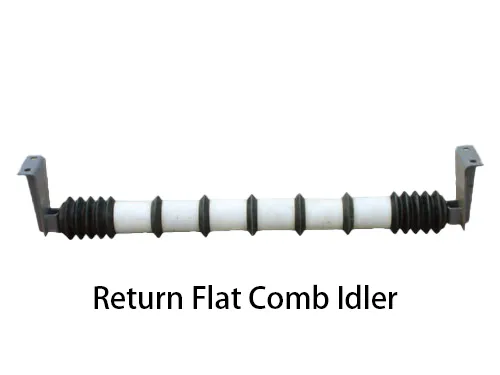 Afrikaans
Afrikaans  Albanian
Albanian  Amharic
Amharic  Arabic
Arabic  Armenian
Armenian  Azerbaijani
Azerbaijani  Basque
Basque  Belarusian
Belarusian  Bengali
Bengali  Bosnian
Bosnian  Bulgarian
Bulgarian  Catalan
Catalan  Cebuano
Cebuano  Corsican
Corsican  Croatian
Croatian  Czech
Czech  Danish
Danish  Dutch
Dutch  English
English  Esperanto
Esperanto  Estonian
Estonian  Finnish
Finnish  French
French  Frisian
Frisian  Galician
Galician  Georgian
Georgian  German
German  Greek
Greek  Gujarati
Gujarati  Haitian Creole
Haitian Creole  hausa
hausa  hawaiian
hawaiian  Hebrew
Hebrew  Hindi
Hindi  Miao
Miao  Hungarian
Hungarian  Icelandic
Icelandic  igbo
igbo  Indonesian
Indonesian  irish
irish  Italian
Italian  Japanese
Japanese  Javanese
Javanese  Kannada
Kannada  kazakh
kazakh  Khmer
Khmer  Rwandese
Rwandese  Korean
Korean  Kurdish
Kurdish  Kyrgyz
Kyrgyz  Lao
Lao  Latin
Latin  Latvian
Latvian  Lithuanian
Lithuanian  Luxembourgish
Luxembourgish  Macedonian
Macedonian  Malgashi
Malgashi  Malay
Malay  Malayalam
Malayalam  Maltese
Maltese  Maori
Maori  Marathi
Marathi  Mongolian
Mongolian  Myanmar
Myanmar  Nepali
Nepali  Norwegian
Norwegian  Norwegian
Norwegian  Occitan
Occitan  Pashto
Pashto  Persian
Persian  Polish
Polish  Portuguese
Portuguese  Punjabi
Punjabi  Romanian
Romanian  Russian
Russian  Samoan
Samoan  Scottish Gaelic
Scottish Gaelic  Serbian
Serbian  Sesotho
Sesotho  Shona
Shona  Sindhi
Sindhi  Sinhala
Sinhala  Slovak
Slovak  Slovenian
Slovenian  Somali
Somali  Spanish
Spanish  Sundanese
Sundanese  Swahili
Swahili  Swedish
Swedish  Tagalog
Tagalog  Tajik
Tajik  Tamil
Tamil  Tatar
Tatar  Telugu
Telugu  Thai
Thai  Turkish
Turkish  Turkmen
Turkmen  Ukrainian
Ukrainian  Urdu
Urdu  Uighur
Uighur  Uzbek
Uzbek  Vietnamese
Vietnamese  Welsh
Welsh  Bantu
Bantu  Yiddish
Yiddish  Yoruba
Yoruba  Zulu
Zulu Conveyor Idlers: Essential for Belt Alignment and Longevity
In a belt conveyor system, maintaining proper alignment and preventing damage are key to efficient operation. Components like belt conveyor idlers, conveyor idlers, and conveyor rollers and idlers play a crucial role in supporting the belt and ensuring its smooth function. The return training idler, in particular, is designed to correct misalignments on the return side, preventing excessive flexing that could lead to wear or failure.

This article highlights the importance of conveyor idlers and their contribution to the overall performance and durability of belt conveyor systems.
Belt Conveyor Idlers: The First Line of Support
Belt conveyor idlers are integral to supporting the weight of both the belt and the materials being transported. Strategically placed along the conveyor, they prevent sagging and excessive stress on the belt.
Key benefits of belt conveyor idlers:
-
Alignment Assurance: Keep the belt centered, reducing the risk of misalignment that can cause spillage or operational inefficiencies.
-
Stress Reduction: Minimize belt flexing, which can lead to premature wear or damage.
-
Load Distribution: Evenly distribute the load, ensuring smooth operation and prolonging belt life.
Without adequate support from belt conveyor idlers, the system could face frequent breakdowns and costly maintenance.
Conveyor Idlers for Stability and Performance
Conveyor idlers are available in various types, each designed to address specific challenges in belt conveyor systems. These include carrying idlers, impact idlers, and return idlers, all of which enhance the stability and efficiency of the conveyor.
Types of conveyor idlers:
-
Carrying Idlers: Positioned on the top side, they support the belt and its load during transport.
-
Impact Idlers: Installed at loading points, they absorb shock to protect the belt and prevent material spillage.
-
Return Idlers: Located beneath the conveyor, these idlers support the return side of the belt and maintain proper tension.
By incorporating the right type of conveyor idlers, businesses can optimize system performance and reduce operational costs.
Conveyor Rollers and Idlers: The Perfect Pairing
While conveyor rollers and idlers may seem interchangeable, they work together to ensure the smooth movement of the conveyor belt. Rollers are the rotating components within idlers, facilitating low-friction movement to minimize resistance and energy consumption.
Advantages of conveyor rollers and idlers:
-
Low Friction Operation: Ensures the belt moves smoothly, reducing wear and tear on components.
-
Durable Construction: Designed to handle heavy loads and harsh conditions, from mining to manufacturing environments.
-
Alignment Support: Helps maintain consistent belt tracking, reducing the risk of costly misalignments.
Investing in high-quality conveyor rollers and idlers ensures long-term reliability and efficiency in your conveyor system.
Return Training Idler: Correcting Misalignment
The return training idler is a specialized component designed to maintain proper belt alignment on the return side. Misalignment on this side can lead to excessive flexing, causing damage to the belt and other components.
Key features of return training idlers:
-
Self-Correcting Mechanism: Automatically adjusts to align the belt, preventing further misalignment.
-
Damage Prevention: Reduces flexing and side-to-side movement, protecting the belt from premature wear.
-
Ease of Installation: Simple to integrate into existing systems, making it a cost-effective solution for alignment challenges.
By incorporating a return training idler, businesses can minimize downtime and ensure consistent conveyor operation.
Elevate System Efficiency with Quality Idlers
From belt conveyor idlers to return training idlers, these components are vital for maintaining belt alignment, reducing stress, and preventing damage. High-quality conveyor idlers and conveyor rollers and idlers ensure smooth operation, lower maintenance costs, and extend the lifespan of the conveyor system.
Invest in premium idlers today to protect your conveyor system and keep your operations running efficiently!
-
Impact Roller for Belt Conveyor – Durable Solutions for IndustryNewsNov.24,2025
-
Rubber Conveyor Rollers – Quiet, Durable, Sealed BearingsNewsNov.24,2025
-
Industrial Conveyor Belt Rollers: Durable Solutions for Harsh EnvironmentsNewsNov.24,2025
-
Idler Rollers for Belt Conveyors | Durable, Low-Noise OEMNewsNov.24,2025
-
Durable Rubber Conveyor Belt Rollers for Industrial UseNewsNov.24,2025
-
Ceramic Lagging Conveyor Pulley – Anti-Slip, Wear-ResistantNewsNov.17,2025





























